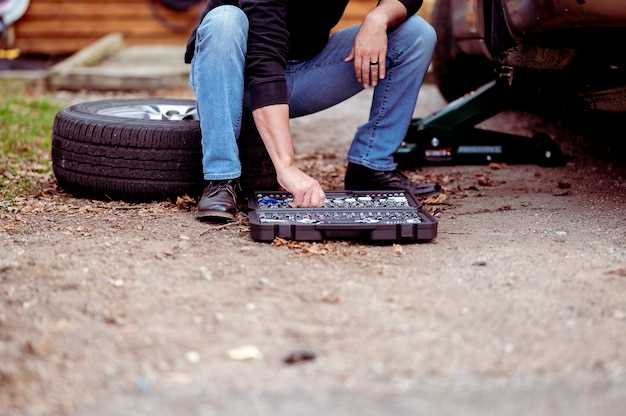
When it comes to enhancing your driving experience, the thrill of taking your daily street car to the racetrack can be unmatched. With the right mods, you can turn your everyday vehicle into a formidable racing machine. This transformation not only boosts performance but also allows you to enjoy the adrenaline rush that comes from conquering the track.
In this article, we will explore the best modifications that can elevate your street car into a true track beast. From suspension upgrades that improve handling to power enhancements that maximize acceleration, each mod plays a crucial role in refining your vehicle’s capabilities. Whether you’re aiming for better grip, improved braking, or increased horsepower, there are essential upgrades that can make a significant difference in your racing experience.
Adaptability is key when transforming a street car for track use. Balancing comfort for daily driving with the performance needed for competitive racing is a challenge, but with the right choices, you can enjoy the best of both worlds. Join us as we delve into the must-have mods that will help you achieve that perfect balance and unleash the full potential of your car on the track.
Upgrading Suspension for Improved Cornering Stability
Upgrading your car’s suspension is one of the most impactful modifications you can make to transform a daily driver into a frontrunner on the track. A well-tuned suspension system enhances cornering stability, allowing for better handling and control during high-speed maneuvers.
Begin by replacing stock shocks and struts with high-performance options designed to provide improved damping and responsiveness. Adjustable coilovers are a popular choice, allowing you to fine-tune ride height and stiffness to match varying track conditions.
Additionally, investing in anti-roll bars can significantly reduce body roll during hard cornering. Stiffer sway bars help maintain the car’s composure, ensuring that weight distribution is controlled, which is crucial when navigating twisty tracks.
Don’t overlook the importance of upgrading bushings. High-quality polyurethane bushings can replace factory rubber ones, providing better precision and feedback during turns. This upgrade minimizes play in the suspension system, resulting in a more connected feel to the road.
Tires play a critical role in how well your car performs on the track, so pairing suspension upgrades with high-performance tires can further enhance grip and cornering prowess. Opt for tires that offer a good balance between daily comfort and track-ready performance.
Lastly, ensure that you have a professional alignment after all upgrades are installed. Correct alignment settings are vital for maximizing tire contact with the road and achieving optimal cornering stability. Overall, these suspension modifications will make your car not only more thrilling to drive on the track but also more capable of handling the demands of everyday driving.
Choosing High-Performance Tires for Track Days
Selecting the right high-performance tires is crucial for transforming your daily car into a track beast. The right tires will enhance grip, stability, and overall handling while pushing the limits on the racetrack. When choosing tires, consider factors such as tread composition, temperature performance, and tread pattern.
First, focus on the tire compound. Street tires are often designed for longevity and comfort, whereas track tires use softer rubber compounds that provide superior grip. Look for tires labeled as ultra-high-performance or track-focused, as these are engineered to perform optimally at higher temperatures typically seen during racing.
Next, examine the tread pattern. Slick tires, which have minimal tread, offer maximum contact with the road, making them ideal for dry conditions. However, if you’re likely to encounter wet conditions, consider tires with a semi-slick design that balances grip with some water evacuation capabilities.
Additionally, pay attention to tire size and width. Wider tires can increase the contact patch, providing better grip, but they may also affect vehicle dynamics. Ensure your daily car can accommodate the selected tire dimensions without compromising safety or performance.
Temperature management is another crucial aspect. High-performance tires can perform poorly if they are not brought up to the proper operating temperatures. Familiarize yourself with the specific heat range for your tire brand and model; using tire warmers can be beneficial in preparing tires before hitting the track.
Finally, consider your driving style and track conditions. Tailor your tire choice to match the characteristics of the track and your performance goals. Investing in high-performance tires will significantly enhance your car’s capabilities on the track, transforming it into the racing machine you desire.
Enhancing Engine Performance with Exhaust and Tuning

Transforming your daily driver into a track beast begins with understanding the importance of engine performance. Two critical mods in this journey are exhaust upgrades and proper tuning. Both can significantly enhance your car’s responsiveness and overall power output.
Upgrading your exhaust system is one of the most effective ways to increase engine performance. Here are the key components to consider:
- Cat-back Exhaust System: A cat-back system replaces the pipes from the catalytic converter to the rear of the car. This enhances exhaust flow, reducing back pressure and improving horsepower.
- Headers: Upgrading to high-performance headers can optimize exhaust gas exit. Metallic or tubular designs increase airflow efficiency, which can lead to significant performance gains.
- High-Performance Mufflers: These are designed to produce a deeper tone while minimizing restrictions. A proper muffler allows your engine to breathe better, further enhancing performance.
After upgrading the exhaust, the next step is tuning. Proper tuning adjusts your car’s engine parameters to match the new exhaust layout, ensuring optimum performance. Consider the following:
- ECU Remapping: Reprogramming the engine control unit (ECU) can optimize fuel maps, timing, and air-fuel mixtures, leading to improved acceleration and engine efficiency.
- Piggyback Tuning Systems: These are additional units that modify ECU signals, adjusting performance without a complete remap. They are a great alternative for those who may not want to fully modify their ECU.
- Dyno Tuning: Utilizing a dynamometer allows for real-time adjustments based on specific conditions and performance data. This custom tuning maximizes gains while ensuring the engine runs smoothly.
By upgrading your exhaust and properly tuning your engine, you can unleash your car’s potential and prepare it for track demands. Combined, these mods not only enhance performance but can also provide a more thrilling driving experience on both daily routes and track days.
Weight Reduction Strategies for Increased Speed
One of the most effective ways to transform your daily car into a track beast is through strategic weight reduction. Reducing excess weight not only improves acceleration but also enhances handling and braking. Here are some proven mods to help you achieve a lighter vehicle.
1. Remove Unnecessary Components: Start by stripping out any non-essential items from your car. This includes rear seats, spare tire, and any plastic trim. Every pound counts, and removing these components can significantly decrease your overall weight.
2. Choose Lighter Materials: Replacing heavy stock parts with lighter alternatives can lead to substantial weight savings. Consider aluminum or carbon fiber for body panels, hoods, and even the trunk. Upgrading to lightweight racing seats can also contribute to the reduction.
3. Optimize the Battery: Switching to a lightweight lithium-ion battery is a smart mod that can enhance performance. Conventional lead-acid batteries are heavy and can be replaced with a fraction of the weight, providing both savings and improved response.
4. Upgrade the Wheels: Ditching heavy stock wheels for lightweight aftermarket options can significantly lower unsprung weight, leading to better handling dynamics. Ensure you select wheels designed for performance to maintain strength without added mass.
5. Exhaust System Modifications: Replacing the factory exhaust system with a lightweight performance exhaust can help reduce weight while also improving the flow, leading to increased power. Look for options that use materials like titanium or stainless steel to maximize weight savings.
6. Consider Weight Distribution: In addition to reducing overall weight, it’s crucial to focus on weight distribution. Moving components like the battery or fuel cell can improve balance, leading to better handling during track sessions.
7. Use Tech-Savvy Solutions: Incorporate modern technology like a digital gauge setup to replace bulky analog hardware. This can save weight while providing you with critical performance data.
By implementing these weight reduction strategies, you can significantly enhance your daily car’s performance on the track, transforming it into a nimble and powerful beast. Each mod contributes to a lighter, faster, and more agile driving experience, giving you the advantage you need when competing on a circuit.
Essential Brake System Upgrades for Safety on Track
Upgrading the brake system of your car is a crucial step when preparing for track days. Enhanced braking performance not only improves lap times but also ensures safety under high-speed conditions. Here are essential brake system mods to consider.
First, invest in high-performance brake pads. Stock pads often fade quickly under track conditions due to heat buildup. Upgrading to racing or semi-metallic pads will provide improved bite and consistent performance, allowing for safer and more effective stopping power.
Next, consider upgrading your rotors. Lightweight, slotted or drilled rotors enhance heat dissipation and reduce the risk of brake fade. This increased cooling capability ensures that your brakes maintain performance even during extended track sessions.
Another critical upgrade is to install stainless steel brake lines. Unlike rubber lines, stainless steel offers less expansion under pressure, resulting in a firmer brake pedal feel. This upgrade improves the modulation of brake pressure, giving you more control while navigating turns and braking zones.
Additionally, upgrading your brake fluid is essential. High-performance brake fluids have higher boiling points, which reduces the chance of brake fade caused by vaporization. Look for fluids specifically designed for track use to ensure optimal performance during intense driving.
Finally, consider a complete brake system overhaul with big brake kits, which offer larger rotors and calipers. This significant upgrade not only improves stopping power but also increases heat capacity, allowing your brakes to perform consistently throughout your track sessions.
Investing in these brake system mods will enhance your car’s safety and performance on the track, ensuring you can focus on driving rather than worrying about brake failure.
Optimizing Aerodynamics with Body Kits and Spoilers

Enhancing the aerodynamic efficiency of your daily driver is crucial when transforming it into a track beast. Body kits and spoilers play a vital role in reducing drag and increasing downforce, which are essential for achieving optimal performance on the racetrack.
Body kits typically include front and rear bumpers, side skirts, and fenders designed to streamline your car’s shape. These components work together to direct airflow, minimizing turbulence around the vehicle. By lowering the vehicle’s height and adjusting angles, body kits can significantly improve stability at high speeds, making your car more responsive when cornering on the track.
Spoilers, on the other hand, are specifically engineered to create downforce. This additional pressure on the rear of the car improves tire grip and overall handling characteristics, especially during aggressive maneuvers. Selecting the right spoiler depends on your driving style and the balance you seek between daily drivability and track capabilities. A well-designed spoiler will not only enhance performance but can also impart a more aggressive look to your vehicle.
Combining appropriate body kits with strategically placed spoilers allows you to fine-tune the aerodynamics of your car. It’s essential to consider the material and design of these parts, as lightweight options can further enhance performance by reducing overall weight. Investing in quality components ensures that your modifications are both effective and durable, standing up to the rigors of track use.
Whether you’re aiming for better straight-line speed or improved cornering ability, addressing aerodynamics through body kits and spoilers is a fundamental step in the process. By optimizing these aspects, you pave the way for a more enhanced driving experience that bridges the gap between daily usability and track excellence.




